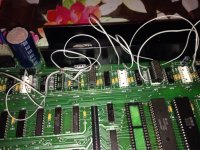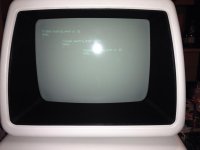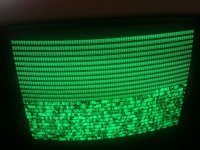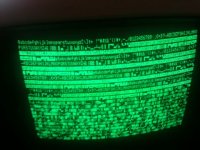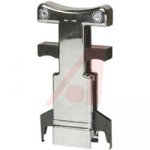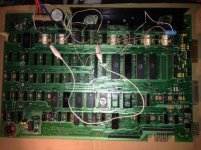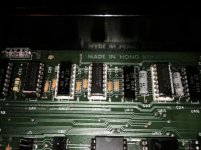emilen72
Member
Regards to all,
I recovered a pet that was in an attic for 30 years ... the board had much rust and dirt and some chips too...
This 8096-sk have a separate board that is plugged with a flat cable on the cpu socket... for now I have disconnected this and put the 6502 on the socket...
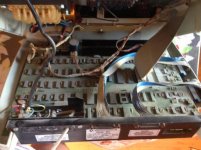

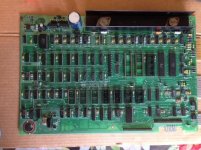 (board after clean and socket-in operation)
(board after clean and socket-in operation)
after a thorough cleaning, I tested the voltages and all are ok, tested with mutimeter and scope...
but at power on, no initial sound and the video stay black (monitor tube low voltage filament is red)...
Some months ago, I repaired a CBM 3032 that had ROM problems, now I thinking that the new 8096-sk had the same problems I unsoldered the rom, and I found one dead (901465-23) , I replaced as with an eprom but nothing to do ...same symptoms
then I tested the CPU and it's ok (put it in the 3032)... the reset circuit is ok (at the power on go low for a second then remains high)... the clock is ok ...
I unsoldered the two 6520 , the 6522 and the CRTC and put socket for these...
I put in a know working CRTC and no good news...
then I put the 6522 removed from 8096-sk in my CBM 3032 and seems ok, same uppercase characters ( without chip are in lower case ) ..
then I put the two 6520 removed for 8096-sk in the CBM 3032 and ... these do not work ... one makes a random sequence of characters that appear on the screen automatically as if it was typed from the keyboard ... the other one 6520 block the CBM3032 at the pre-boot screen, the entire screen full of random characters as when it have faulty rom...
I also tried the monitor ... I connected the cable of the monitor of the 8096-sk to the motherboard of 3032 ... and the video work, even if the picture is not as I thought ...
 (3032 video signal on 8096-sk monitor)
(3032 video signal on 8096-sk monitor)
Now some the questions before I start to investigate further:
1 ) it is normal that the video signal of 3032 is displayed so strange on the 8096-sk's 80 columns monitor?, or the monitor is to be repaired anyway?
2 ) the 8096-sk can operate without 6520 and 6522 on board? ok no boot sound but it work?
thanks to all and sorry for my bad english...
I recovered a pet that was in an attic for 30 years ... the board had much rust and dirt and some chips too...
This 8096-sk have a separate board that is plugged with a flat cable on the cpu socket... for now I have disconnected this and put the 6502 on the socket...


 (board after clean and socket-in operation)
(board after clean and socket-in operation)after a thorough cleaning, I tested the voltages and all are ok, tested with mutimeter and scope...
but at power on, no initial sound and the video stay black (monitor tube low voltage filament is red)...
Some months ago, I repaired a CBM 3032 that had ROM problems, now I thinking that the new 8096-sk had the same problems I unsoldered the rom, and I found one dead (901465-23) , I replaced as with an eprom but nothing to do ...same symptoms
then I tested the CPU and it's ok (put it in the 3032)... the reset circuit is ok (at the power on go low for a second then remains high)... the clock is ok ...
I unsoldered the two 6520 , the 6522 and the CRTC and put socket for these...
I put in a know working CRTC and no good news...
then I put the 6522 removed from 8096-sk in my CBM 3032 and seems ok, same uppercase characters ( without chip are in lower case ) ..
then I put the two 6520 removed for 8096-sk in the CBM 3032 and ... these do not work ... one makes a random sequence of characters that appear on the screen automatically as if it was typed from the keyboard ... the other one 6520 block the CBM3032 at the pre-boot screen, the entire screen full of random characters as when it have faulty rom...
I also tried the monitor ... I connected the cable of the monitor of the 8096-sk to the motherboard of 3032 ... and the video work, even if the picture is not as I thought ...
 (3032 video signal on 8096-sk monitor)
(3032 video signal on 8096-sk monitor)Now some the questions before I start to investigate further:
1 ) it is normal that the video signal of 3032 is displayed so strange on the 8096-sk's 80 columns monitor?, or the monitor is to be repaired anyway?
2 ) the 8096-sk can operate without 6520 and 6522 on board? ok no boot sound but it work?
thanks to all and sorry for my bad english...
Last edited:

